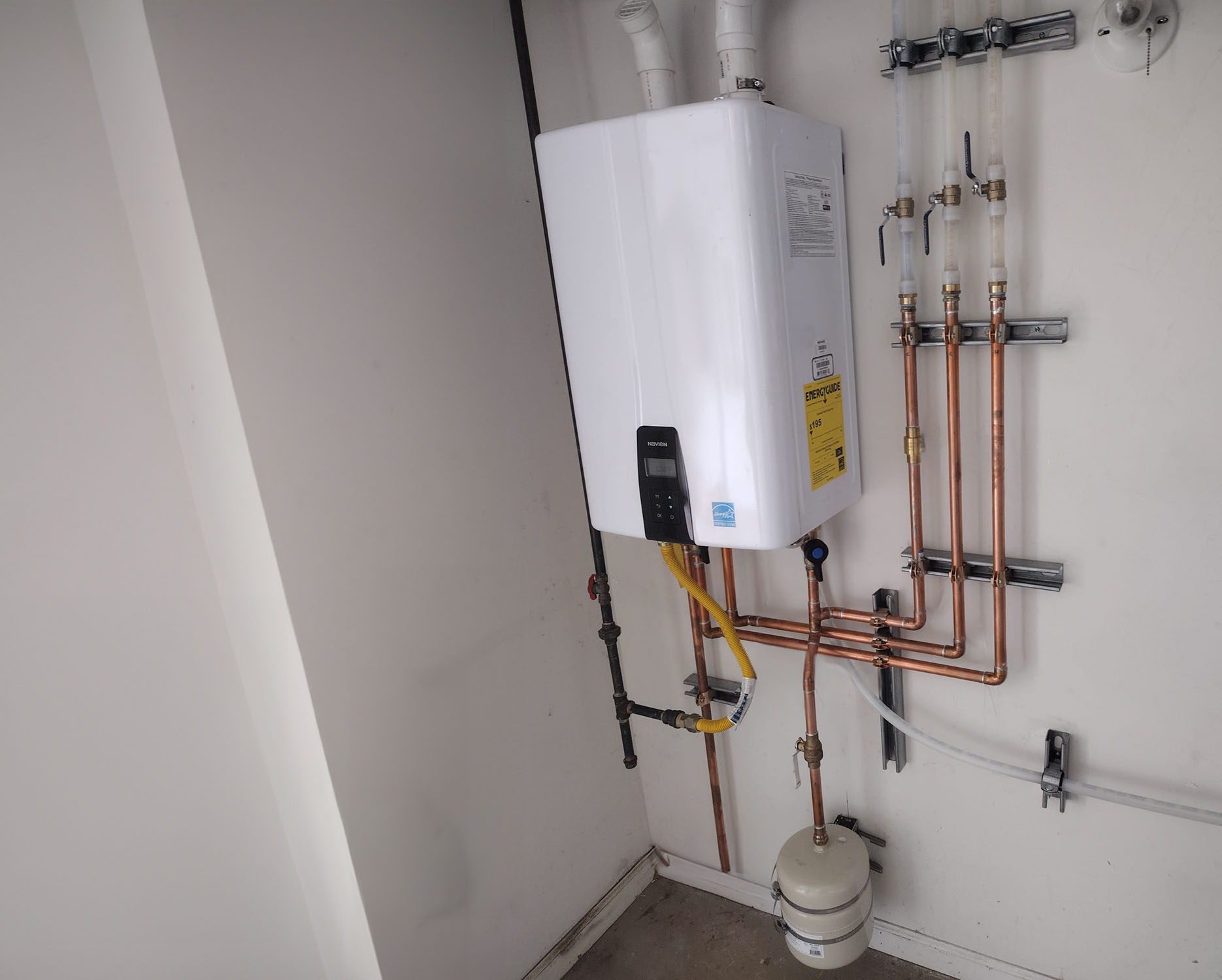

Energy Efficiency
Your trusted partner for professional home services. Quality workmanship, guaranteed satisfaction.




- HEP
- Energy Efficiency
Energy Efficiency | Tankless Water Heater Install | Plumbing | Clairfield
Enjoy endless hot water, lower utility bills, and extra storage space with HEP’s Energy Efficiency Plumbing team in Clairfield. Our licensed technicians remove bulky, outdated tanks and replace them with sleek, on-demand systems that cut energy use by up to 40 percent—helping you save money while shrinking your carbon footprint.
A professional tankless water heater install isn’t just a swap; it’s a precision-engineered upgrade backed by robust warranties and friendly, local service. From the first consultation to final cleanup, we tailor every connection to your home’s exact needs, ensuring reliable performance and consistent comfort for years to come. Call HEP today and experience the smarter way to heat your water.
FAQs
How does a tankless water heater improve energy efficiency compared to a traditional storage tank in Clairfield?
Traditional storage water heaters keep 40–80 gallons of water hot all day, leading to standby heat loss. A tankless (on-demand) unit heats water only when a tap or appliance calls for it. Because there is no standby heat loss, U.S. Department of Energy studies show tankless models are 24�–34 % more efficient for homes that use 40 gallons or less of hot water daily and 8–14 % more efficient for high-demand households. With Clairfield’s moderate climate, incoming water is not extremely cold, so the unit works less to reach set temperature, further boosting efficiency and lowering utility bills.
Will a tankless system supply enough hot water for my family’s needs?
Yes—when properly sized. During your in-home assessment we calculate the gallons per minute (GPM) each fixture or appliance uses and add them up for the maximum number likely to run at once (e.g., shower + dishwasher). We also measure the temperature rise needed in Clairfield (difference between incoming groundwater—typically 55–60 °F—and your preferred hot-water set-point). The right model will deliver continuous hot water at that flow rate and temperature rise. If you have an unusually large household or simultaneous high-flow requirements, we can install multiple units in parallel or recommend a recirculation loop to ensure comfort.
What is involved in converting from a tank to a tankless heater?
A tankless upgrade typically includes: 1. Removing the old tank and freeing up floor space (up to 16 sq ft). 2. Mounting the new unit on a wall, inside or outside depending on venting and freeze-protection requirements. 3. Upsizing the gas line (most gas units need ¾-inch supply) or adding a dedicated 240-V breaker and wiring for electric models. 4. Installing Category III or IV stainless-steel venting or concentric PVC venting for gas units. 5. Flushing the plumbing lines, adding isolation valves and a condensate drain. 6. Performing a combustion-safety test and adjusting the burn rate for Clairfield’s elevation. Most jobs take one working day; complex gas-line reroutes can add time.
How much can I expect to save on utility bills in Clairfield, and what incentives are available?
Households switching from a standard natural-gas storage water heater to a high-efficiency condensing tankless unit typically save $80–$120 per year on gas costs in the Clairfield area, depending on usage. Electric tankless units can reduce electricity use by 10–20 %. The payback period is usually 5–7 years. Check with the Tennessee Valley Authority (TVA) and the federal ENERGY STAR® program for rebates up to $300 on qualifying models, plus 30 % federal tax credits (capped at $600) under the Inflation Reduction Act. Some local utilities offer additional low-interest financing for energy-saving upgrades.
What maintenance does a tankless water heater require?
To maintain peak efficiency and warranty coverage, schedule an annual service that includes: • Descaling the heat exchanger with a vinegar or citric-acid solution (especially important because Clairfield’s water hardness averages 6–8 grains per gallon). • Cleaning the inlet water filter and air intake screen. • Inspecting the burner, fan, and vent for debris. • Verifying gas pressure, combustion quality, and temperature settings. • Updating firmware on smart-connected units. A well-maintained tankless heater can last 20 years or more, compared with 10–12 years for a tank heater.
Is a tankless water heater environmentally friendly?
Absolutely. By eliminating standby heat loss and burning fuel more efficiently, tankless units cut greenhouse-gas emissions. A high-efficiency (0.94 UEF) gas tankless heater can save roughly 1,000 lbs of CO₂ annually compared with a standard 0.60 UEF tank. Electric tankless systems paired with Clairfield’s increasingly renewable TVA grid lower emissions even further. The compact design also uses fewer raw materials, and because the heat exchanger is replaceable, the unit avoids the landfill when another component fails, reducing waste.